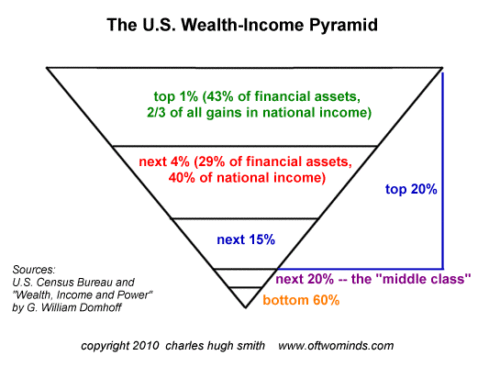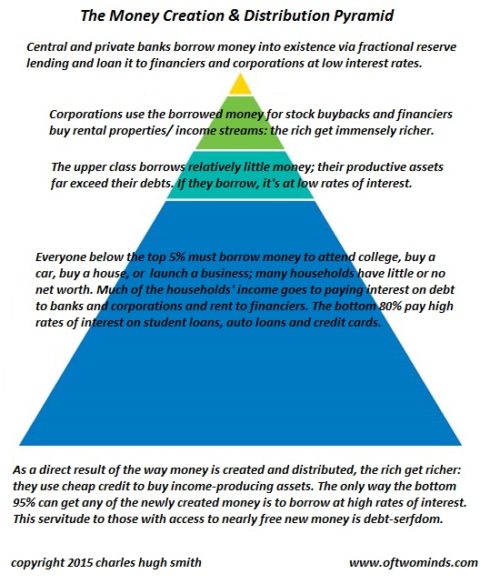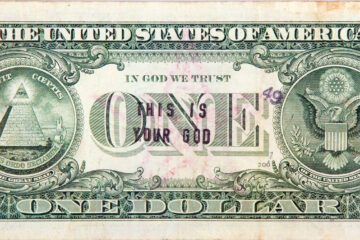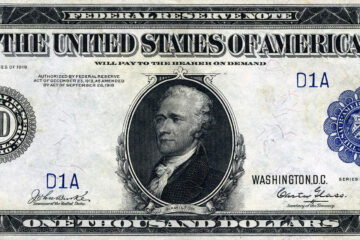If We Don’t Change the Way Money Is Created and Distributed, We Change Nothing
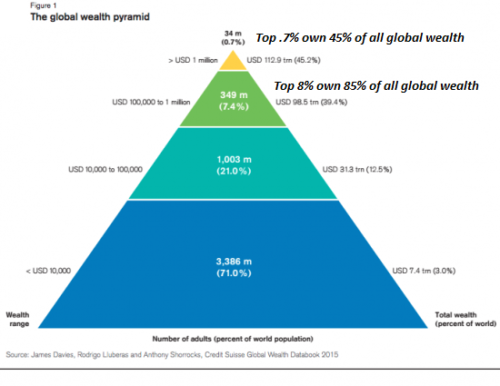 The only real solution is to create and distribute money at the base of the pyramid rather than to those in the top of the pyramid.
The only real solution is to create and distribute money at the base of the pyramid rather than to those in the top of the pyramid.
by Charles Hugh Smith
EDITOR’S NOTE: Mr. Smith’s conclusion, which is essentially the same as that of C.H. Douglas in his Social Credit, is correct, with one exception: Since real wealth-creation is vastly unequal between the races, and measurement of real wealth by these different races is impossible because so many of their values are incommensurable, this system cannot be applied globally or it would become another kind of slavery. But, within our own civilization, its application would free us from the Jewish system that is stealing our future, and would unleash the creativity of our people in a way never before seen.
* * *
MANY well-intended people want to reform the status quo for all sorts of worthy reasons… their goals are laudable, but if we don’t change the way money is created and distributed, nothing really changes: wealth inequality will keep rising, governance will remain a bidding process of the wealthy, wages will continue stagnating, etc.
If the money creation/distribution system isn’t transformed, “reform” is nothing more than ineffectual policy tweaks that offer do-gooders the illusion of progress.
Few are willing to admit that the way we create and distribute money at the top of the wealth pyramid necessarily generates increasing wealth inequality because once we admit this, we realize 1) the money system itself is the source of inequality and 2) we have to change the money system if we want to stave off the inevitable rise of wealth inequality to the point that it generates social disorder.
In the current system, money is created by central and private banks at the top of the wealth/power pyramid, and distributed within the top of the wealth pyramid. The only possible output of this system is rising wealth inequality and debt-serfdom for three reasons:
- Those with first access to nearly free money can outbid savers and serfs who must borrow at much higher rates of interest to snap up income-producing assets. In effect, borrowing unlimited sums at near-zero rates guarantees that those with this privilege have a built-in advantage in buying income-producing assets. The only possible output of this systemis the rich get richer as they buy up all the most profitable and lowest-risk income-producing assets.
- Those who can borrow virtually unlimited sums at less than 1% interest skim vast wealth by loaning the money out to everyone below the top of the pyramid at 4% (mortgages), 8% (other loans), and 18% (credit cards). This funnels much of the national income stream to those who can borrow cheap and lend the money at much higher rates.
- Since the wealthy already own most of the income-producing assets, the easiest way to boost their wealth is to bid up those assets with cheaply borrowed money. For example, borrowing $100 million and using it for stock buybacks leverages the value of the shares by far more than $100 million.
Three different perspectives of the wealth pyramid illustrate how our money system generates wealth inequality as the only possible output of the system:
The system of central banks, private banks, and fractional reserve lending is global. The net result is that globally, the vast majority of wealth is owned and controlled by those at the very apex of the wealth/power pyramid: the top 8% own 85% of global wealth.
In the U.S., the wealth-income pyramid can be represented by an inverted pyramid: the bulk of wealth and income are in the hands of the top 5%. The bottom 80% own an essentially trivial percentage of the national wealth.
This pyramid illustrates how the money creation and distribution pyramid works:
There are a number of proposed alternatives to this the rich can only get richer and the rest of us can only get poorer system. The only real solution in my view is create and distribute money at the base of the pyramid, to those generating useful goods and services in the community economy, rather than to those in the top of the pyramid. This money isn’t borrowed into existence, so there is no interest to be skimmed by its creation.
* * *
Source: Author


